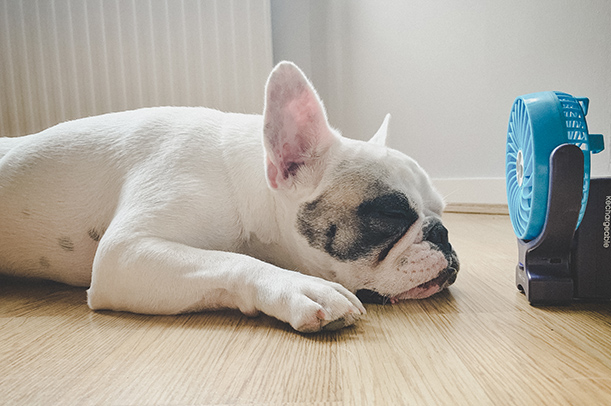BOOMbox at Home: How to Beat the Heat
July 13, 2021

We're exploring summer adventures! Let's learn about the science behind heat, and the best ways to beat it and protect yourself to enjoy the summer.
The Science behind the Heat
Have you ever wondered why you feel so hot in the summer? Why are some times of day cooler than others? We have all the answers.
The sun emits two types of UV rays: UVA and UVB. Although UVA rays are the strongest and cause cancer, UVB rays are the ones responsible for sunburns (think “B” for burn). If you live near the equator or at high altitudes, these rays are even stronger. The sun’s rays are the strongest from 10 am to 4 pm in the northern hemisphere, so make sure to stay protected.
The reason the Earth is the hottest in the summer is because the Earth’s axis is tilted. During the summer, the sun’s rays hit the Earth at a steep angle. The light does not spread out as much as it does during the winter, thus increasing the amount of energy hitting any given spot. Also, the long daylight hours allow the Earth plenty of time to reach warm temperatures. Although you may think that the sun is closest to Earth in the summer, it’s actually the farthest away in July!
If you want to know more about heat and summer, look at these resources:
Protecting Yourself in the Summer
When you’re out in the sun and the sun's rays reach your skin, your body makes vitamin D, which helps your body absorb calcium for stronger, healthier bones. However, too much unprotected exposure to the sun's ultraviolet (UV) rays can cause skin damage, eye damage, immune system suppression, and skin cancer. The lighter someone's natural skin color, the less melanin it has to absorb UV rays and protect itself. The darker a person's natural skin color, the more melanin it has. But both need protection from UV rays, because any tanning or burning causes skin damage.
Kids are especially vulnerable to UV rays because they’re out in the sun longer than most adults are. So, what should you do to protect yourself? If you want to play outside, make sure you wear enough sunscreen. The American Academy of Dermatology (AAD) recommends that all kids wear sunscreen with an SPF of 30 or higher. Whatever sunscreen you choose, make sure it's broad-spectrum, meaning that it protects against both UVA and UVB rays. Some of the best ingredients to have in your sunscreen are titanium dioxide or zinc oxide, because they are less irritating for sensitive skin. Make sure to apply a generous amount (usually two to three finger lengths) and reapply it every two hours.
Other than sunscreen, make sure you cover yourself with sunglasses or a hat. Try to wear light-colored clothing, preferably cotton or linen, to keep yourself cool too.
For more information, check out these resources:
Best Way to Beat the Heat: A DIY Fan Activity
You learned all about the science behind heat and how to protect yourself--now it's time to beat the heat!
For this craft, all you need is:
- Construction paper in any color
- Popsicle sticks
- Glue or double-sided tape
Then, follow these simple steps:
- Fold the construction paper into an accordion shape. Start at one end and fold about an inch of paper up. Next, turn the paper over and fold another inch. Repeat until the entire paper has been folded.
- Fold the accordion in half to make a V shape.
- Pull the top edges of the folded side up and attach them with glue or double-sided tape.
- Use glue or tape to secure two wooden popsicle sticks to the bottom of the fan. This will allow you to easily open and close your fan.
When the fan is not in use, close it and wrap a rubber band or string around it. Now you can keep cool in the summer.
View more detailed instructions with picture examples.
For more ways to stay cool this summer, see these fun activities you can do at home or outside:
Scientist of the Week
Jennifer Lin, MD, an assistant professor of dermatology at Harvard Medical School and codirector of the Melanoma Risk and Prevention Clinic at Brigham and Women's Hospital, is an expert when it comes to sun protection. Melanoma is a serious type of skin cancer that develops when melanocytes (the cells that give the skin its pigmentation) start to grow out of control. Dr. Lin has done extensive research on melanoma and is trained on how to help people identify signs of it and prevent it altogether.
Dr. Lin shared her thoughts about the science of sunscreen for Harvard Health. She recommends wearing sunscreen every day, since it protects you from various types of skin cancer, but also to stay out of the sun in general. However, this doesn’t mean you can’t still have fun in the summer! Some other preventive things you can do to protect yourself are to wear sun-protective clothing and make sure to avoid the peak hours when the sun’s rays are the strongest.
Written by Mahnoor.